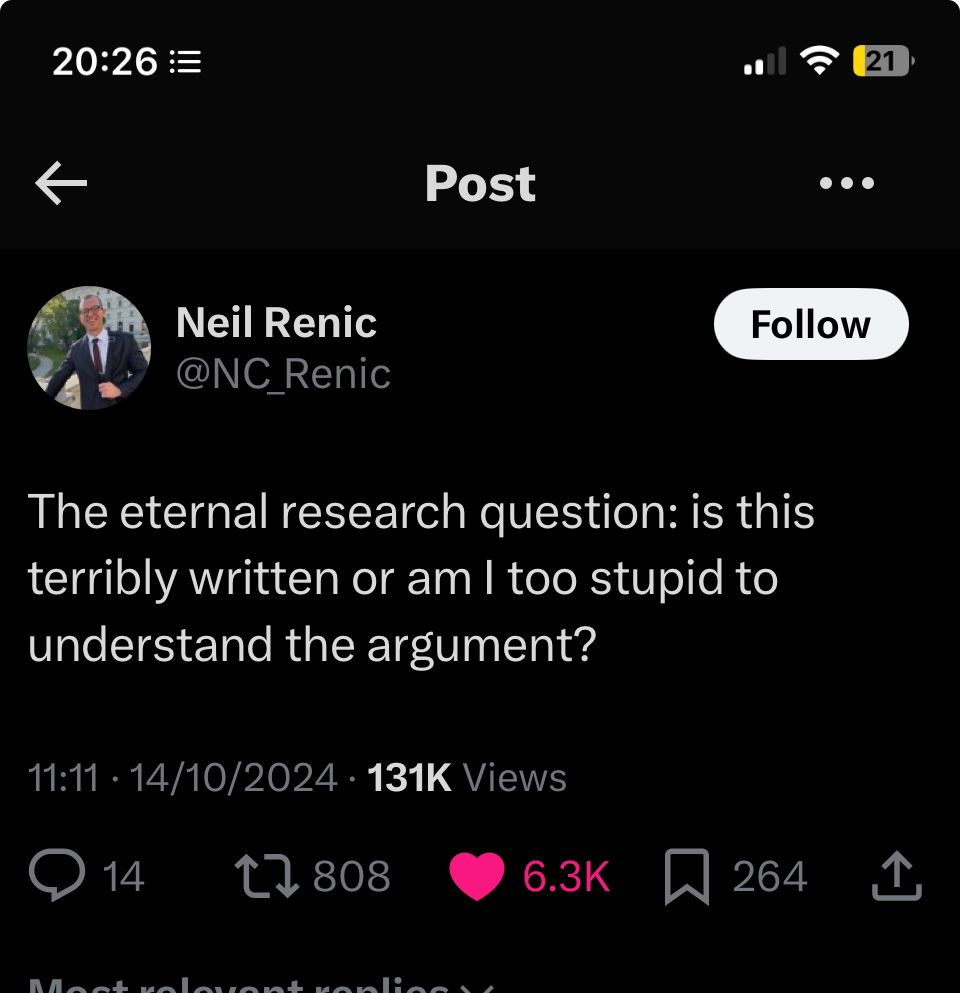this post was submitted on 16 Oct 2024
1072 points (99.4% liked)
Science Memes
11021 readers
3530 users here now
Welcome to c/science_memes @ Mander.xyz!
A place for majestic STEMLORD peacocking, as well as memes about the realities of working in a lab.

Rules
- Don't throw mud. Behave like an intellectual and remember the human.
- Keep it rooted (on topic).
- No spam.
- Infographics welcome, get schooled.
This is a science community. We use the Dawkins definition of meme.
Research Committee
Other Mander Communities
Science and Research
Biology and Life Sciences
- [email protected]
- [email protected]
- [email protected]
- [email protected]
- [email protected]
- [email protected]
- [email protected]
- [email protected]
- [email protected]
- [email protected]
- [email protected]
- [email protected]
- [email protected]
- [email protected]
- [email protected]
- [email protected]
- [email protected]
- [email protected]
- [email protected]
- [email protected]
- [email protected]
- [email protected]
- [email protected]
- [email protected]
- !reptiles and [email protected]
Physical Sciences
- [email protected]
- [email protected]
- [email protected]
- [email protected]
- [email protected]
- [email protected]
- [email protected]
- [email protected]
- [email protected]
Humanities and Social Sciences
Practical and Applied Sciences
- !exercise-and [email protected]
- [email protected]
- !self [email protected]
- [email protected]
- [email protected]
- [email protected]
Memes
Miscellaneous
founded 2 years ago
MODERATORS
you are viewing a single comment's thread
view the rest of the comments
view the rest of the comments

Variables can be in arbitrary units. If you put the units through the same steps as the values, you'll end up with the right unit, plus you need the values to be in compatible units for the operations to even make sense. At least as long as any constants are also given the correct units. This can also help discover cases where you accidentally mix similar but different units (like litres and gallons).
I also find it very satisfying to do those equations on the units, adding ones that get multiplied in and cancelling ones that get divided out, and then ending up with a unit that makes sense, given what the equation was supposed to express.
Though we might be saying the same thing, because while I don't think variables need units, expanding that variable with a value absolutely should involve a unit, as should any examples of that equation's use.
Edit: an example to show what I mean:
If you have a table that is 1.5m long and know that you want at least 2 feet between the wall and the table on each side so that people can get in and out if chairs comfortably, you'd have 1.5m + 2*2ft as the equation, but you can't add an m to a ', so you need to multiply one of them by a conversion factor:
1.5m + 2 * 0.3048m/ft * 2ft
The ft terms cancel out and you're left with
1.5m + 2 * 0.3048m * 2
= 1.5m + 1.2192m
~= 2.72m
So your space must be at least 2.72m to fit that table and chairs comfortably (by the above definition of comfort, at least).
Funny enough, this use of units helped me avoid a mistake in this example because I had the ft/m conversion initially but saw that would result in trying to add m to ft² so it was obvious that I had made a mistake. Otherwise I might have looked like an idiot trying to say that a 1.5m table with 4 feet of buffer space requires a room over 12m long.
Yeah it's stuff like this that can make a huge problem like with the Mars Climate Orbiter crashing because its programmers were mixing and matching SI and Imperial units. Adding a few minutes to a document can save hours of looking stuff up for the reader later.
But imagine describing an area in meter•feet instead of square feet or square meters. That could really piss everyone off.
We're going to need two kilometer inches worth of markings for this football field!